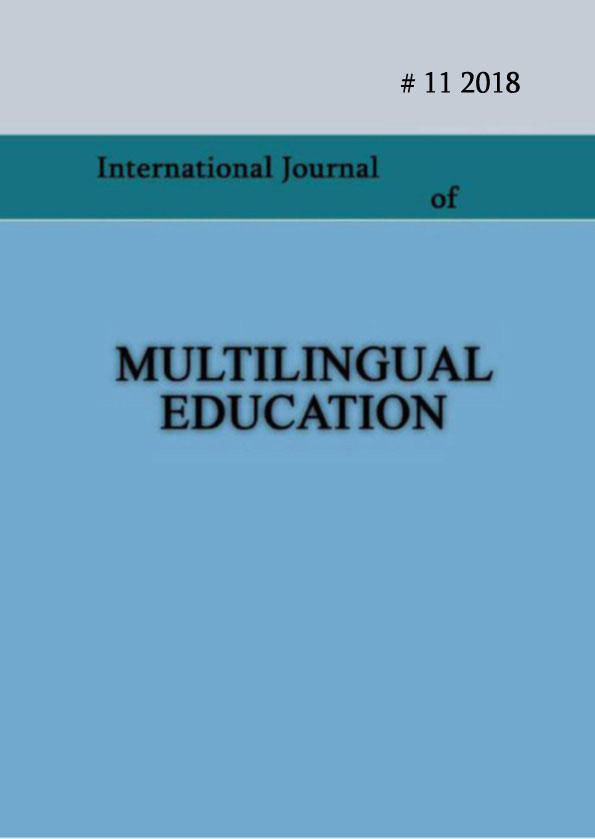The importance of stress and intonation in the process of learning Georgian as a second language
Keywords:
listening, strategy, stress, intonation, dialogueAbstract
Listening as a skill plays a great role at the first stage of language learning. Listening helps understanding and enables language learners to perceive information, express their ideas, etc.
Listening means “cooperation between the teacher and the listeners.” The strategies of teaching L2 must be worked out by teachers based on the abilities of the class.
Students studying Georgian as a second language have problems with correct pronunciation of words and phrases in rapid speech. At the first stage language learners do not know grammatical rules well and they study the language by imitating their teacher’s words and phrases. It is clear that the role of listening is great at the first stage.
Time after time language learners get used to the teacher’s voice, tone and articulation system. They pay attention to the teacher’s verbal and non-verbal signs and start to understand the language. In the process of learning and understanding the language, language learners pay great attention to stress and intonation. Georgian language has weak dynamic stress. Foreign language teachers always pronounce words clearly, marking stressed syllables. They also mark learners’ attention to certain phonemes and point at certain endings of the words, stressing the last syllables of the words; Thus, initially, language learners study the language through listening, ignoring grammar rules.
Language learners easily learn language through dialogues. The role of stress and intonation is great in dialogues. The forms of the words in short sentences are more easily remembered than in long texts. In the process of teaching L2 we pay attention to the parts of speech that are frequently used in communication.
In the process of listening and speaking we frequently use the method “parallel dialogues” that means involvement of another person in the process of speaking. This is an interactive lesson is a great fun for language learners and is practically proved. Listening to the dialogues and repeating it, is another helpful method employed by us.
We observed that language learners in dialogues prefer using short answers. Teachers should point to the problem and try to eradicate students’ tendency to answer the questions too briefly.
Learning a second language through listening is one of the best teaching strategies.
References
Dzamashvili, 2014 - Dzamashvili, E. (2014). Methods of presenting listening material at English lessons I – IV forms, dissertation thesis. Telavi. Georgia.
Feikrishvili, 2014 - Zh. & Saghinadze Feikrishvili, Zh. & Saghinadze, R. (2014). Phonetics and Morphology of the Georgian Language. “Universali” .Tbilisi. Georgia.
Kenchiashvili, 2014 - Kenchiashvili, N. (2014). Stress from the linguistic point of view. Odzeli, 2014 - Odzeli, M. (2014). Georgain as a foreign language (geofl.ge). Tbilisi. Georgia.
Shaverdashvili, Fhitskhelauri, Ramishvili, Gvasalia, 2014 - Shaverdashvili, E., Fhitskhelauri, N., Ramishvili, F. & Gvasalia, M. (2014). Basics of Teaching a Foreign Language, Vol 1, Ilia State University Tbilisi. Georgia.
https: // natiakentchiashvili.wordpress.com
Downloads
Published
How to Cite
Issue
Section
License
Copyright (c) 2018 Maia Kikvadze

This work is licensed under a Creative Commons Attribution-NonCommercial 4.0 International License.
Copyright (c) - Authors who publish with this journal agree to the following terms: Authors retain copyright and grant the journal the right of first publication with the work simultaneously licensed under a Creative Commons Attribution-Noncommercial 4.0 International License, which allows others to share the work with an acknowledgement of the work's authorship and initial publication in this journal. Authors are permitted and encouraged to post their work online (e.g., in institutional repositories or on their personal website) prior to and during the submission process, as it can lead to productive exchanges, as well as earlier and greater citation of published work (see The Effect of Open Access). Authors may enter into separate, additional contractual arrangements for the non-exclusive distribution of the journal's published version of the work (e.g., post it to a repository or publish it in a book), with an acknowledgement of its initial publication in this journal.

